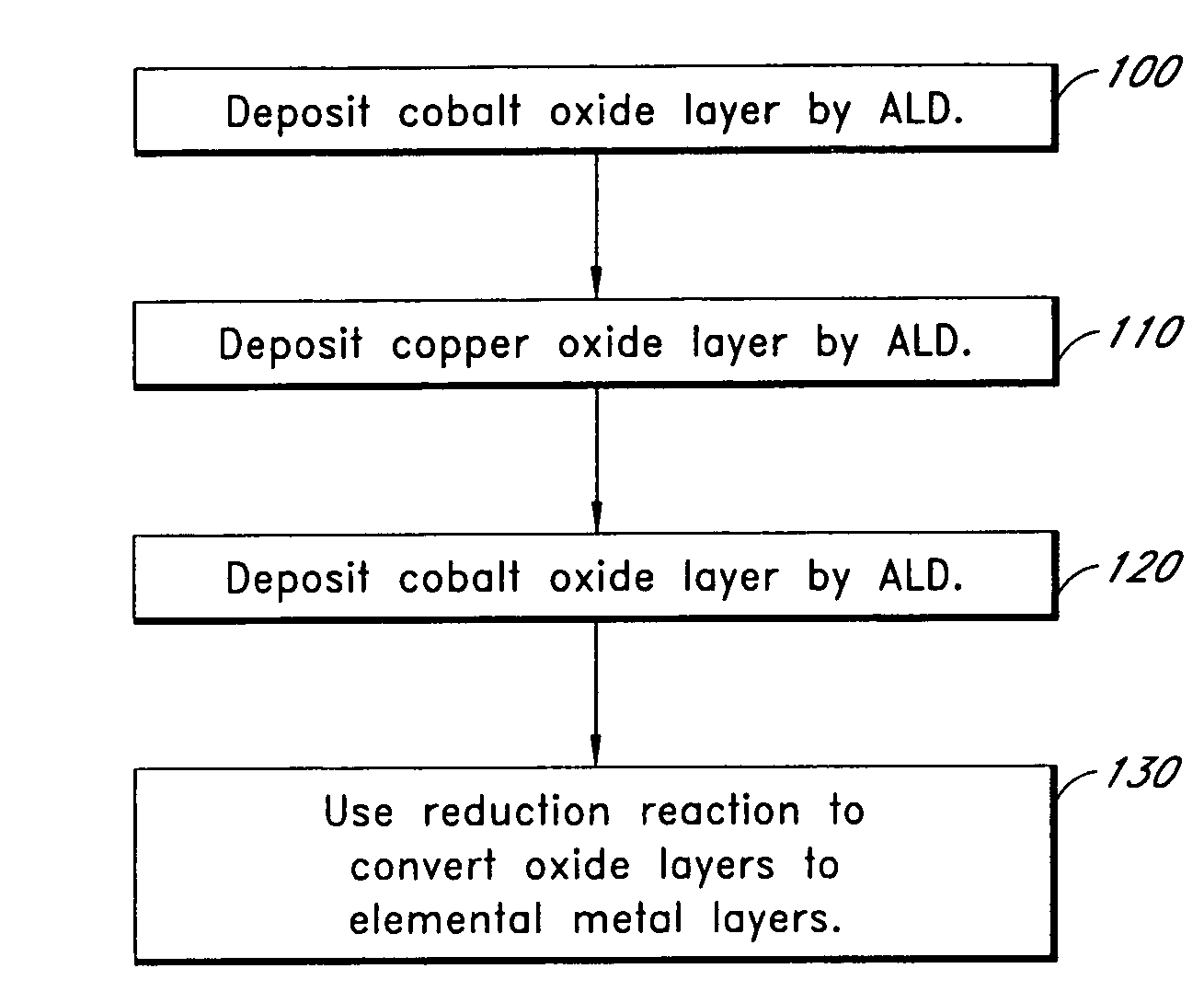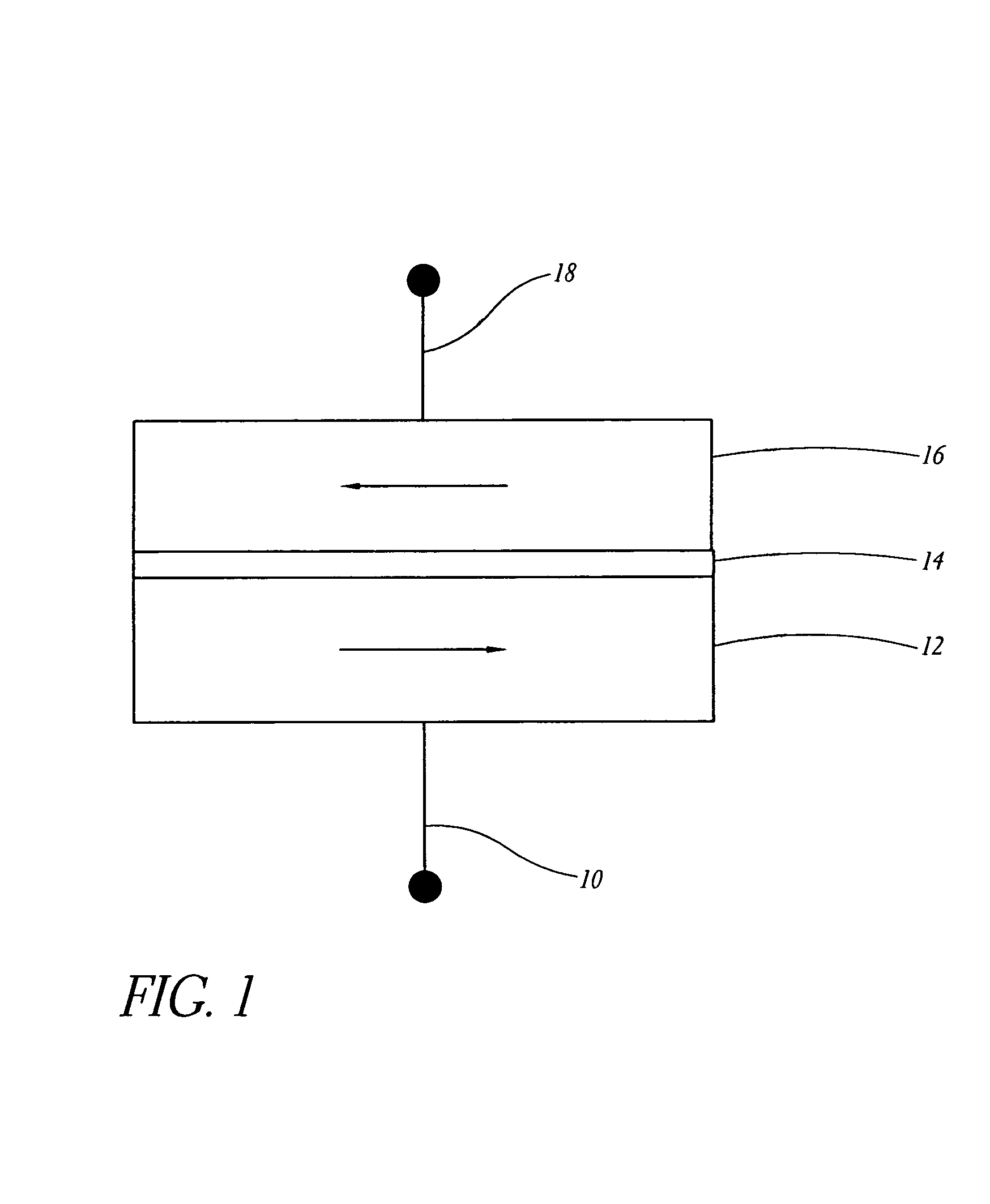Thin films for magnetic device
a thin film, magnetic device technology, applied in the direction of magnetic bodies, applications of chemical vapor deposition, instruments, etc., can solve the problems of device failure, sensitive to corrosion, and require very careful treatment, so as to avoid leakage current, reduce migration, and optimal thickness
- Summary
- Abstract
- Description
- Claims
- Application Information
AI Technical Summary
Benefits of technology
Problems solved by technology
Method used
Image
Examples
example 1
The Deposition of Aluminum Oxide by ALD
[0095]A substrate was loaded into a reactor configured for ALD processing. The reaction space was evacuated with a vacuum pump. After the evacuation, the pressure of the reaction space was adjusted to about 5–10 mbar (absolute) with flowing nitrogen gas that had a purity of 99.9999%. Then the reaction chamber was allowed to stabilize at 300° C. Alternating pulses of trimethyl aluminum (TMA) and water were introduced into the reaction space and made contact with the substrate surface. The reaction space was purged with nitrogen gas between the alternating pulses.
[0096]The growth rate of the amorphous Al2O3 film was 0.11 nm / cycle. The thickness variation of an aluminum oxide film was less than 1%. Advantageously, Al2O3 is thermodynamically stable and tends not to cause oxidation of the adjacent metal layers.
example 2
The Deposition of Copper Oxide by ALD and a Reducing Method
[0097]The deposition of copper oxide by ALD and its subsequent reduction to copper metal is described in Finnish patent application no. FI20001163, filed May 15, 2000, now abandoned, PCT application number FI01 / 00473, filed May 15, 2001 and U.S. patent application Ser. No. 09 / 975,466, filed Oct. 9, 2001, the disclosures of which are included herein by reference.
A. Reduction of CuO with Methanol Vapor
[0098]A substrate comprising a copper oxide layer is loaded into the reaction chamber of an Eagle 10™ reactor, commercially available from ASM Japan. The reaction chamber is evacuated to vacuum and heated to 360° C. The pressure of the reaction chamber is adjusted to about 5–10 mbar with flowing nitrogen gas.
[0099]Methanol vapor is mixed with nitrogen gas, introduced to the reaction chamber and contacted with the substrate.
[0100]Excess methanol and reaction by-products are purged from the reaction chamber by flowing nitrogen gas....
example 3
The Deposition of Cobalt Oxide by ALD and a Reducing Method
[0125]Cobalt oxide (CoO) was deposited by ALD from alternating pulses of Co(thd)3 and an ozone / oxygen mixture. A substrate was loaded into the reaction space of an ALD reactor. The reaction space was evacuated with a vacuum pump. The reaction space temperature was adjusted to 250° C. Cobalt source gas Co(thd)3 was heated to 110° C. in a source container inside the ALD reactor. Alternating pulses of cobalt source gas and the ozone / oxygen mixture were introduced into the reaction space. The ozone / oxygen mixture had a flow rate of about 100 std. cm3 / min during the ozone pulse.
[0126]The pulsing cycle consisted of the following steps:[0127]Co(thd)3 pulse 1.5 s[0128]N2 purge 2.0 s[0129]O3 pulse 3.0 s[0130]N2 purge 2.0 s.
[0131]The pulsing cycle was repeated 2000 times. The resulting thin film had a thickness of about 64 nm and a growth rate of about 0.03 nm / cycle. Stoichiometry of the CoO film was determined by energy dispersive x-...
PUM
| Property | Measurement | Unit |
|---|---|---|
| temperature | aaaaa | aaaaa |
| thickness | aaaaa | aaaaa |
| pressure | aaaaa | aaaaa |
Abstract
Description
Claims
Application Information
 Login to View More
Login to View More - R&D
- Intellectual Property
- Life Sciences
- Materials
- Tech Scout
- Unparalleled Data Quality
- Higher Quality Content
- 60% Fewer Hallucinations
Browse by: Latest US Patents, China's latest patents, Technical Efficacy Thesaurus, Application Domain, Technology Topic, Popular Technical Reports.
© 2025 PatSnap. All rights reserved.Legal|Privacy policy|Modern Slavery Act Transparency Statement|Sitemap|About US| Contact US: help@patsnap.com



